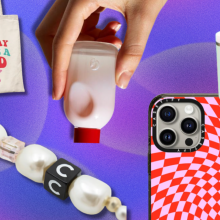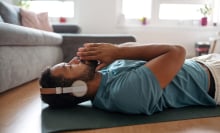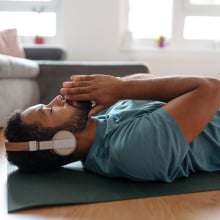Being a girl or woman is knowing that you're full of complexities and contradictions that society helped create but discourages you from claiming or criticizing.
The doting mother secretly battles depression intensified by the expectation of "having it all" while having no support at home or from most politicians. A black woman is supposed to contain a lifetime of rage while someone casually goads her with racist comments or behavior. The transgender girl is treated like a predator in her school's bathroom and develops crushing anxiety that transphobic people then blame on her identity. Eventually, women lose count of how many times they've been gaslit into thinking their pain is their doing.
Then, when girls and women do seek treatment from mental health providers for their anguish, they often encounter professionals who don't truly see them or their circumstances. Instead, they patronize patients by focusing on their sensitivity or emotional nature. Sometimes they hand out extreme diagnoses that make girls and women feel less capable of handling what they face.
This is exactly the dynamic that dozens of mental health experts wanted to stop when they developed an updated set of guidelines for how psychologists should engage with and treat their female clients. Those recommendations, published today by the American Psychological Association, urge therapists to emphasize resilience and strength; to recognize and understand the role discrimination, violence, and oppression play in their clients' lives; to pay more attention to groups of women who disproportionately experience bias and trauma; and, to use diagnoses only when they are necessary.
"Women suffering from psychological problems need treatment, but that has to be in a more affirmative, more empowering way, and it has to be effective," says Lillian Comas-Diaz, a clinical professor of psychiatry and behavioral sciences at the George Washington University School of Medicine and co-chair of the working group that revised the guidelines.
That message, sent from one of the most influential professional organizations in the mental health field, is bound to leave countless girls and women feeling seen, maybe for the first time in their lives.
Comas-Diaz thinks it's about time that happens. The guidelines were written in 2007, and the expectation is to update them every 10 years. While the previous recommendations contained some of the same themes and guidance, the revisions reflect how the world has transformed in the past decade, making visible identities, stories, and experiences that were once ignored or silenced.
The former guidelines, for example, mentioned "transgender individuals" just once, and only to say the recommendations didn't apply to that demographic. The updated document refers to transgender women numerous times, including to point out that they are at much higher risk for violence than cisgender women. Female veterans, elderly women, immigrants and refugees, and girls and women with disabilities also receive new or heightened attention in the updated guidelines, with an emphasis on their increased risk for experiencing sexual or physical abuse, as well as bias.
Meanwhile, the guideline authors note, women subjected to interpersonal violence are likelier to be diagnosed with more severe conditions. The trauma of childhood sexual abuse can create emotional and psychological distress that, when expressed by some youth, can send kids into the juvenile justice system instead of mental health treatment. And, of course, women are much more likely to experience depression, have more risk for relapse, and endure longer depressive episodes than men.
Instead of framing these research findings as the failure of girls and women to thrive, the guidelines urge psychologists to think more deeply about the impact of outside powers, especially how their clients' life experiences reflect structural injustices and inequality — and how their subsequent pain and suffering is a normal response to what they've lived through.
"In the medical establishment, historically, there has been a view of females as less than, as victims, as helpless," says Lillian Comas-Diaz. "We in psychology also need to add to that a perspective that has to do with the social forces and the history and legacy of discrimination and oppression."
"A lot of providers, if they're not culturally competent and humble, they may not be able to help girls and women."
The guidelines may have lofty aims, but they also contain clear recommendations for psychologists looking to adopt or integrate practices that are affirmative, developmentally appropriate, effective, and relevant to girls' and women's unique experiences. Chief among them is to "honor and cultivate" their resilience and strengths, qualities that are often overlooked by mental health providers focused on weakness or fragility.
The document also reiterates the importance of cultural competence in helping psychologists grasp the complexities of a client's lived experiences and respond accordingly with not just treatment tailored to her background, but also helpful community resources, or folk, indigenous, and complementary or alternative healing approaches.
Additionally, the guidelines remind psychologists that some treatments or interventions are based on studies using a homogenous population, most often "White, young, able-bodied, verbal, intelligent, and successful clients," and therefore may not work as well for women and people of color.
"A lot of providers, if they're not culturally competent and humble, they may not be able to help girls and women," says Comas-Diaz.
The new guidelines will no doubt prompt vigorous nodding, maybe even a little rejoicing, from girls and women who've felt like their mental health provider failed to see them as full human beings. That's why they probably won't stir the same controversy as the guidelines for boys and men issued earlier this year by the APA. Those became the subject of numerous stories and op-eds because they challenged the role of stereotypical ideas about masculinity.
Though the guidelines can't be enforced in any way, the revised document gives girls and women proof that they deserve better from their therapists and puts the onus on psychologists to deliver. And that's exactly how it should be.
Topics Gender Health Mental Health Social Good

















